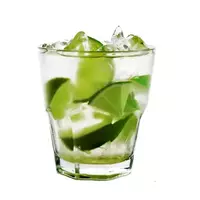Kashasa

A strong alcoholic drink of cachas or cachaça is considered a true symbol and pride of Brazil. This drink has been made for several centuries in a row by distillation, namely the distillation of sugar cane juice. It is noteworthy that the process of obtaining a kashas drink is divided into three main stages - "head, " "heart, " as well as the "tail" of the distillate. The stages of the distillation process are important, because in the process of making porridge, sugar cane juice is converted not only into a strong alcoholic drink.
The starting sugar substance breaks down into various fractions, including volatile and heavy. In addition, the type of cachas depends on the distillation step at which the distillation process was stopped. The following types of kashasa are distinguished:
kashasa of the head;
tail porridge;
kashasa heart.
It is noteworthy that the first two varieties of kashasa belong to low-grade drinks. In contrast, heart kashasa is an internationally recognized drink for true foodies and connoisseurs. The cost of some varieties of heart kashasa reaches several hundred dollars per liter. Typically, the percentage of alcohol in kashas is in the range of 38 to 54%. Elite types of porridge are preliminarily kept in wooden barrels and only then bottled.
During the aging period, which in some cases reaches three years, the porridge drink acquires its distinctive taste and distinctive aroma. In addition to the main types of kashasa, there is another Brazilian "folk" classification of the drink. They distinguish between factory kashasa and, the so-called drink "from fazenda" or homemade kashasa. The first drink is made on an industrial scale and exported to other countries of the world.
Kashasa "s fazenda" or domestic kashasa is incredibly popular and in demand among the local population. It is believed that only a drink made at home and according to ancient Brazilian recipes can bear the proud name of cachas. The drink cachas began to be made in Brazil since the time of Spanish colonization. According to an old formulation, kashasu was made from sugar cane, which was preliminarily ground, corn flour, soybeans, wheat bran or rice were added.
After the sugar cane was reborn, the mass was placed in special copper cubes for distillation. After the distillation process, the kashasa was prevented into wooden barrels in which the drink was aged for at least a year. The production process of industrial porridge is strikingly different from the old method of making a drink. Producers of alcoholic beverages, including cachas in Brazil, use full-cycle distillation columns and steel vats to make the drink. Industrial kashasa is very rarely aged in barrels.
As a rule, the drink is immediately bottled and sent for sale. To its taste, kashasa resembles whiskey or cognac. The color of the drink can vary depending on the composition of the initial ingredients, as well as the aging time of the porridge. most often, kashasa is found on sale in color resembling brewed black tea, in which a slice of lemon was added. Given the importance of the drink for the inhabitants of the country, as well as the centuries-old history and traditions associated with production, the Brazilian authorities decided to assign the status of a national drink and a state symbol to the cachas.
Currently, the real Brazilian cachas is sold under the trademarks Paduana, Old 88, Germana, Tatuzinho and others. In addition to a strong alcoholic drink, a famous cocktail is called porridge. The Brazilian cough cocktail recipe, like two drops of water, resembles Mojito's cocktail recipe. However, instead of rum, Brazilian bartenders prepare a cocktail with a drink of cachas. The result is a distinctive drink called Caipirinha (from the Portuguese Caipirinha).
kashas 224.52 kCal
Energy value of kashasa (Ratio of proteins, fats, carbohydrates - ju):
Proteins: 0.1 g (~ 0 kCal)
Fats: 0.1 g (~ 1 kCal)
Carbohydrates: 0.52 g (~ 2 kCal)
Energy ratio (bj | y): 0% | 0% | 1%
 Español
Español Français
Français Português
Português Русский
Русский 简体中文
简体中文 繁體中文
繁體中文 日本語
日本語 한국어
한국어 العربية
العربية Türkçe
Türkçe Қазақ
Қазақ Deutsch
Deutsch Italiano
Italiano Українська
Українська
